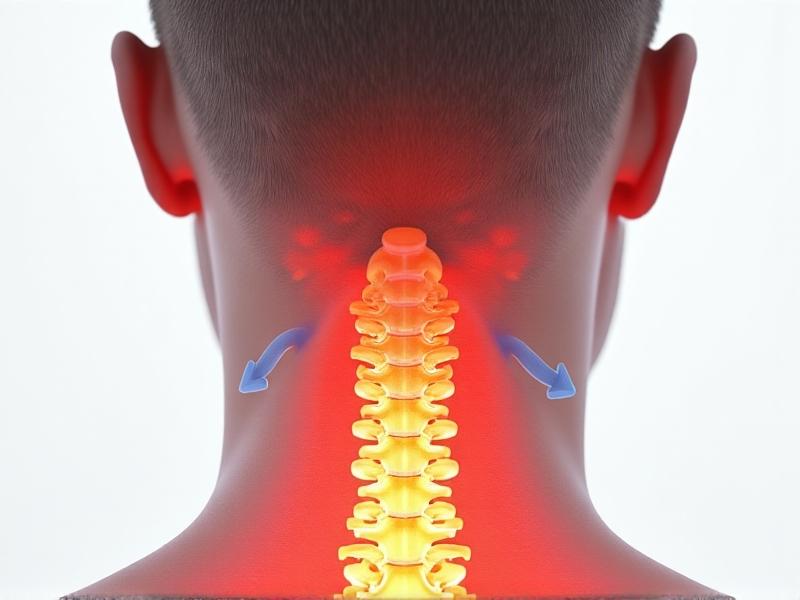```html
Understanding Sustained Posture Fatigue

Modern lifestyles demand prolonged periods of sitting or standing in fixed positions, whether at desks, behind wheels, or on factory floors. Sustained posture fatigue occurs when muscles, joints, and connective tissues remain static for too long, leading to stiffness, reduced circulation, and chronic discomfort. Unlike dynamic movement, which allows muscles to contract and relax rhythmically, static postures create uneven pressure on spinal discs and strain supporting muscle groups. Over time, this can escalate into conditions like lower back pain, cervical strain, or even repetitive stress injuries. The insidious nature of posture fatigue lies in its gradual onset—many dismiss early warning signs like mild shoulder tension or occasional numbness until they become debilitating.
The 2-Hour Rule: Origins and Basic Principles

Developed through ergonomic research and workplace safety studies, the 2-Hour Rule proposes that no single posture should be maintained for more than two consecutive hours. This guideline aligns with OSHA recommendations and biomechanical studies showing that muscle metabolism slows and joint lubrication diminishes after 90–120 minutes of immobility. The rule isn’t about abrupt changes but encourages intentional microbreaks—standing for seated workers, walking for drivers, or shifting weight for those who stand. It’s a flexible framework: a teacher might alternate between lecturing and desk work, while a programmer could intersperse coding sessions with walking meetings. The key lies in recognizing posture as an active process rather than a passive state.
How Static Postures Strain the Body

When the body remains still, gravity exerts constant force on muscles and joints without relief. In seated positions, hip flexors shorten, hamstrings tighten, and the pelvis tilts backward, flattening the lumbar spine’s natural curve. This misalignment forces upper-back and neck muscles to overcompensate, leading to tension headaches and reduced diaphragmatic breathing capacity. Prolonged standing, meanwhile, pools blood in the lower extremities, stressing venous valves and increasing plantar fascia tension. A 2021 study in the
Journal of Occupational Medicine
found that workers who stood beyond two-hour intervals had 34% higher rates of knee and hip discomfort. Neurologically, static postures reduce proprioceptive input—the body’s sense of position—leading to slower reflex responses and increased injury risk during sudden movements.
Actionable Techniques for Posture Resets

Implementing the 2-Hour Rule requires habit stacking—pairing posture breaks with existing routines. Try the “Water Bottle Strategy”: drink from a small container, ensuring frequent refill trips. Use phone calls as opportunities for pacing or gentle calf raises. For desk workers, the “20-8-2” formula complements the rule: 20 minutes seated, 8 standing, 2 moving. Apps like Stretchly or Stand Up! offer customizable reminders with quick mobility exercises. A 90-second break every two hours to perform doorway chest stretches or wall-assisted hip hinges can counteract forward-head posture. Those in rigid environments, like surgeons or lab technicians, might isometrically engage core muscles or perform ankle circles discreetly.
Designing Environments for Posture Fluidity
Ergonomics shouldn’t anchor users to one “perfect” posture but facilitate seamless transitions. Invest in sit-stand desks with programmable height presets. Use anti-fatigue mats with varied textures to encourage subtle foot movements during standing intervals. Monitor arms allow quick screen repositioning when switching between seated and standing modes. For drivers, lumbar support cushions and steering wheel grips that promote varied hand positions help. The goal is to eliminate friction in posture changes—a stool for brief perching near standing desks, or a mobile pedestal for industrial workers to alternate between leaning and upright postures. Even small tweaks, like replacing a desk chair’s armrests with swing-away models, can increase movement opportunities.
Pitfalls in Applying Time-Based Posture Rules
Common mistakes include treating the two-hour mark as a rigid deadline (“I’ll finish this email first…”), leading to unintentional extensions. Others misinterpret “break” as cessation of work rather than posture variation—continuing to type on a laptop while standing perpetuates shoulder strain. Overcompensation is another risk: abruptly switching from eight hours sitting to eight hours standing without transitional conditioning. Some neglect environmental factors; using a standing desk on a wobbly floor or in poor lighting can cause new issues. A 2023 University of Waterloo study noted that 41% of standing desk users reported increased lower back pain initially due to inadequate core strength. Gradual adaptation and hybrid approaches yield better compliance than all-or-nothing changes.
Cognitive and Emotional Perks of Posture Variety
Physical benefits aside, the 2-Hour Rule enhances mental performance through increased blood flow and sensory stimulation. A Stanford study found walking boosts creative ideation by 60% compared to sitting. Posture shifts also regulate emotional states—standing tall can elevate confidence, while mindful transitions reduce task-related anxiety. In educational settings, students given posture breaks every two hours scored 14% higher on retention tests. The rhythm of planned breaks creates natural task boundaries, reducing cognitive overload. For remote workers, these intervals combat videoconference fatigue by shifting visual focus distances. Even brief posture resets trigger the lymphatic system’s waste-removal processes, potentially reducing brain fog.
Customizing the Rule for Unique Demands
Tailoring the rule requires analyzing movement patterns. Office workers might alternate between focus tasks (seated) and collaborative ones (standing). Drivers can schedule stops using the “Two-Hour or 100-Mile” guideline. Parents caring for infants might layer posture changes into feeding routines—using a standing rocker or floor-based play. Creative professionals could link posture resets to project milestones—sketching for two hours, then photographing work while walking. Tactical occupations like firefighters build natural breaks through equipment checks and crew rotations. The universality lies in the principle: intentional variety prevents cumulative strain, whether you’re a programmer, painter, or pilot.




